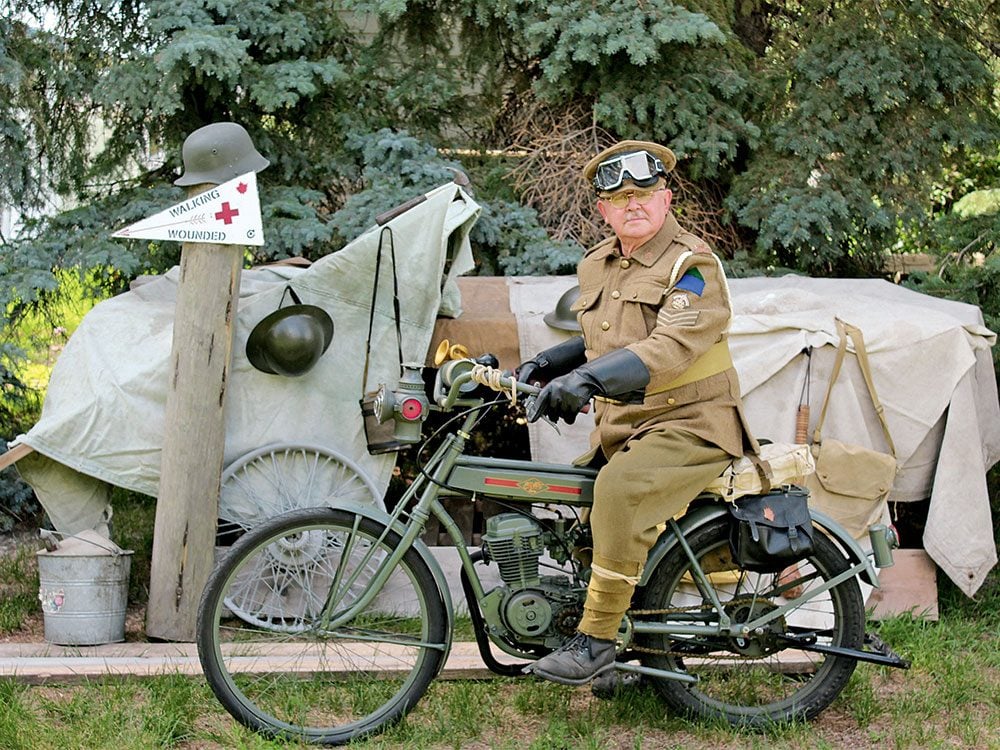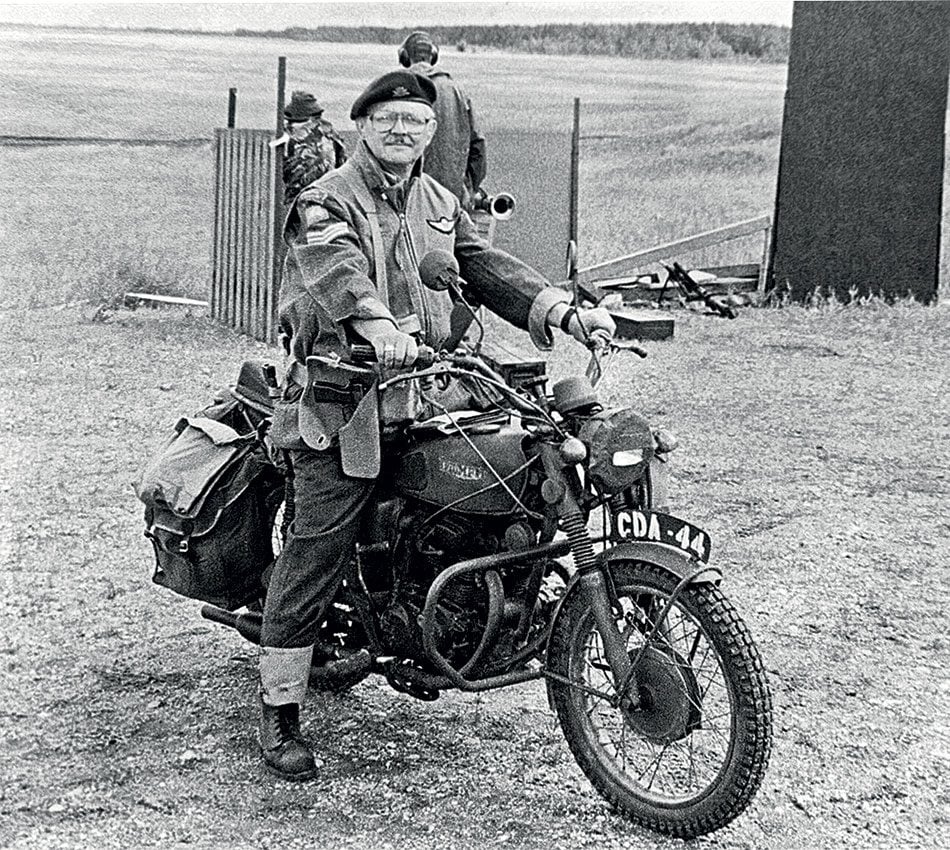
You’d swear these vintage motorcycle replicas were the real deal
Since 1966, I have been an avid motorcycle driver and owner of several different bikes. During the ’80s, I came across a military article on the role of Canadian army dispatch riders (DR) in WWI and WWII. The article spoke about their training regime here in Canada, the type of bikes they drove and the vital role they played in delivering battlefield messages from the frontline to rear command centres.
Being a long-time motorcyclist and collector, it seemed like a natural fit for me to pursue this as a new installment for my collection. I was always on the lookout for WWII motorcycles. In fact, if I had been born in the late ’30s I would have been old enough to buy one of the many army surplus bikes that went for sale in 1946. Unfortunately, I wasn’t and had to resort to Plan B—to build a replica by using a contemporary bike frame, motor and wheels and slowly add modern reproductions of actual WWII parts. This plan was to be carried out by a very talented British motorcycle mechanic and builder who lived in a nearby city. It was simply too difficult to get my hands on authentic bikes, so all of my dispatch motorcycles are well-built replicas that have suited my projects over the years.
With the help of historic military photos, appropriate parts, and the right colour paint and markings, my bikes are very convincing. In all my years of doing the Dispatch Rider presentation, very few people have been able to tell the difference. However, those who could often commented on the good job.
I have been able to collect both WWI and II dispatch rider parts and kits from all over Canada. My WWII collection consists of the proper Canadian army uniform, correct insignia and rank. Accompanying the uniform are boot gaiters, a two-piece rain suit, black leather gauntlet gloves, eye goggles, the army issue dispatch rider message bag and the last and hardest item to get—the second-issue steel dispatch rider motorcycle helmet. In WWI, the usual kit was the everyday battle dress uniform and soft peaked hat. However, there are photos of Second World War dispatch riders wearing the standard army issue Brodie metal helmet.
During WWI, training was very minimal for the dispatchers and most of them were actually race car drivers. However, by WWII there was a structured training program and testing course. The program prepared the riders for all weather conditions, terrain and night driving. They were also taught how to read a map, use a compass and find the quickest route to their destination. Their final test often required them to deliver a message to a location in the fastest time possible; however, their testing sergeant would disable the bike at the very beginning of their route, requiring them to locate and repair the problem as quickly as possible.
When the dispatch riders arrived overseas, they underwent more training that included the use of hand signals and being the lead and follow-up vehicles for convoys. When shipped over to the front lines, they quickly learned the real dangers of war and immediately put their training to the test. They understood that the majority of their time would be spent on their bikes, so, just like any soldier, they learned to eat and rest whenever possible. When stationed along the frontline, they had to move quickly, avoid shell holes and take cover. They also realized that the quickest way to a destination wasn’t always the safest and would learn how to find alternative routes. However, there was one item that dispatch riders on both sides of the battlefield were persistently aware of. Enemy forces would often tie a thin, almost invisible wire across roads or pathways, at neck level, to disable or decapitate DRs as they made their runs.
Don’t miss the incredible story of how a metal shaving kit saved this WWII soldier’s life.

The Manitoba Antique Auto Museum
I have included my dispatch rider motorcycles in a number of parades, presentations and shows. I often let people examine the bikes and one of my proudest moments as a collector was having WWII and Korean War vets approach these bikes and tell me stories about the wars. I have learned so much about the extreme pressure and danger these riders faced in order to complete their duty.
My local community is home to a very special and unique antique automobile museum. Its collection of vehicles, both rare and distinct, belonged to the late Isaac Clarkson, who was just a farm boy who held a fond interest in automobiles. In 1946 he began restoring old machinery he found in farming fields, junk piles, old barns and basket cases. With the mechanical skills that most farmers seem to be born with, he lovingly restored almost 100 cars to driving condition! In 1961, when the collection became too large for him to safely store, he offered it to the Village of Elkhorn, Manitoba, as a gift. In 1967, as a centennial community project, a large permanent display building was constructed to properly showcase and protect the vehicles.
For several years, my wife and I have volunteered at the museum because of my love for history. We help any way we can and in return, the museum has been kind enough to exhibit my replica military projects at their events.
My newest project is a WWI dispatch rider’s motorcycle. It truly looks like it was taken from a European battlefield over a century ago. The motorcycles back then were nothing more than large framed bicycles, with a small motor attached to them and gas-fuelled headlamps. The suspension consisted of two large metal coiled springs that lay under the bicycle seat. Back in WWI, the top speed might have reached 50 miles per hour. I’ve managed to get mine up to 20 miles per hour, and am quite pleased with that. As far as final touches go, I have added an original WWI kit and was even able to find a close copy of a WWI French taxi horn.
Through this collection, I am trying to rejuvenate Canadian military history for younger Canadians so they can better understand the sacrifices our soldiers have made over the years.
Don’t miss these powerful true stories from Canadian veterans.